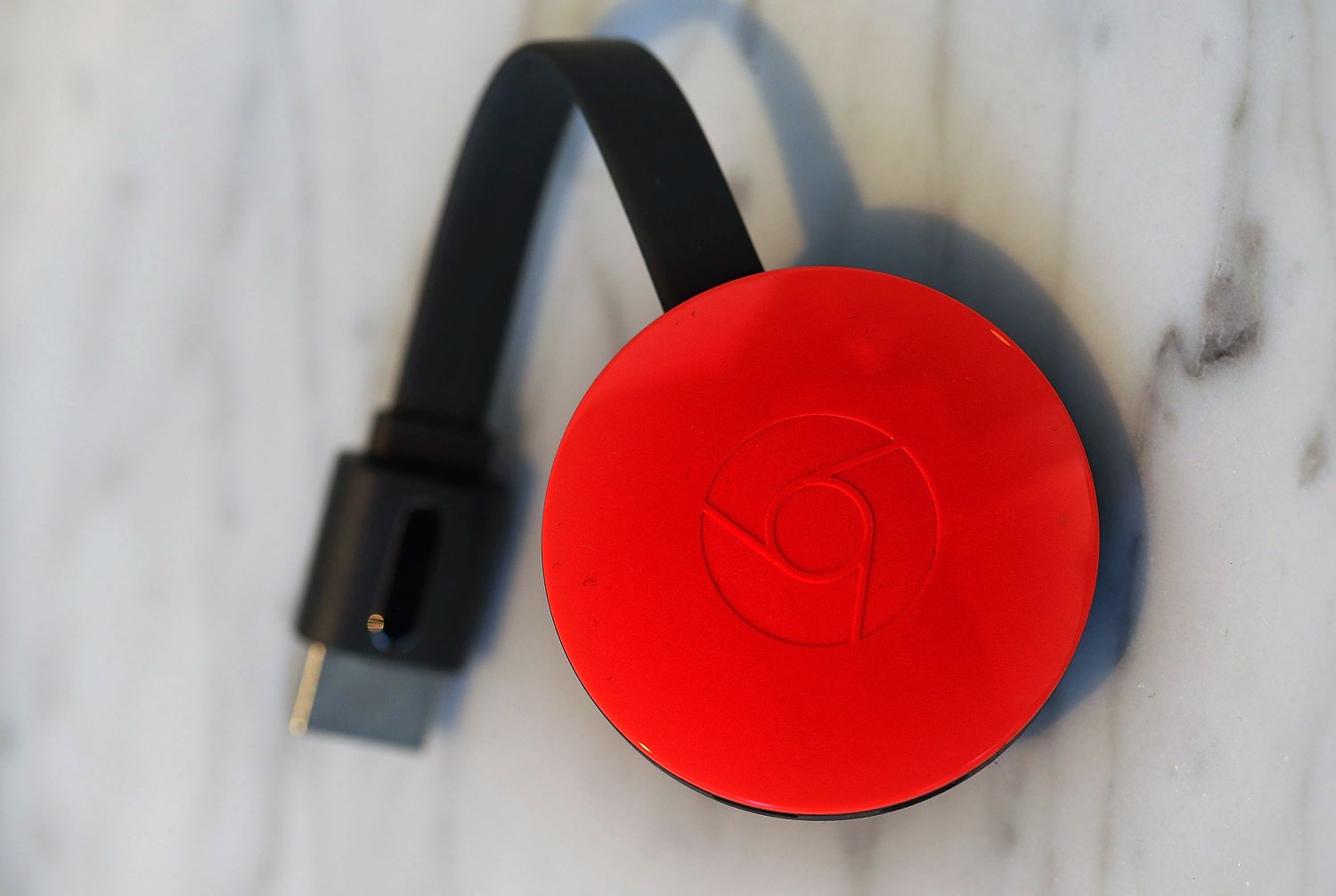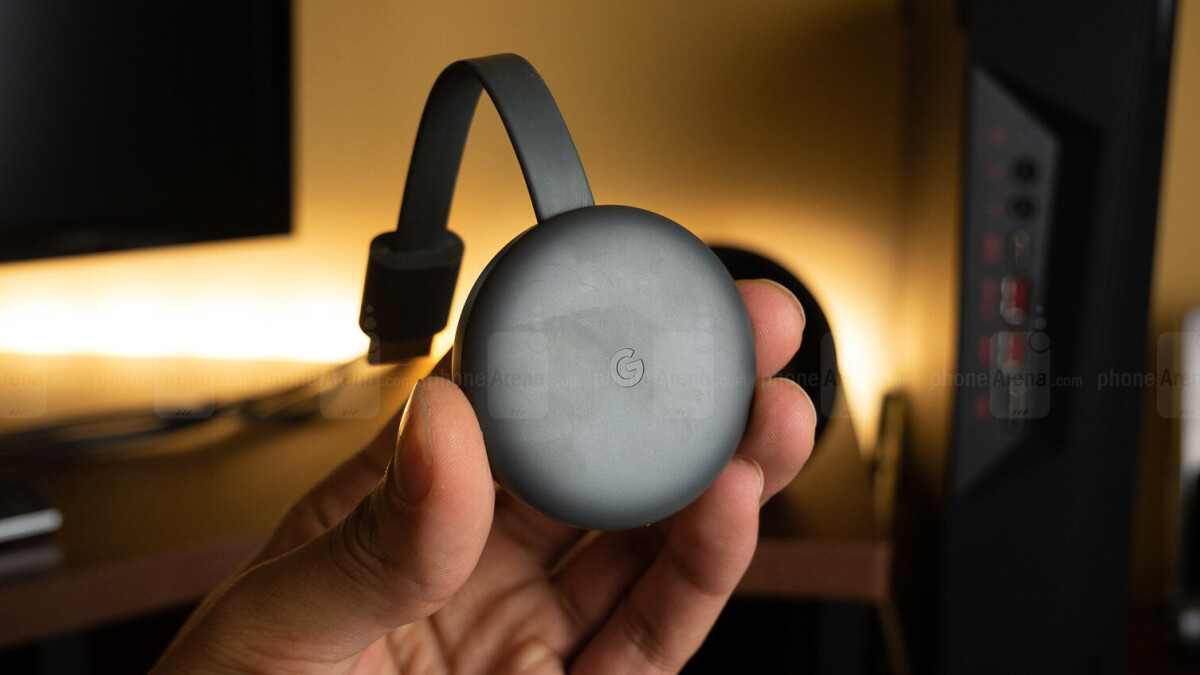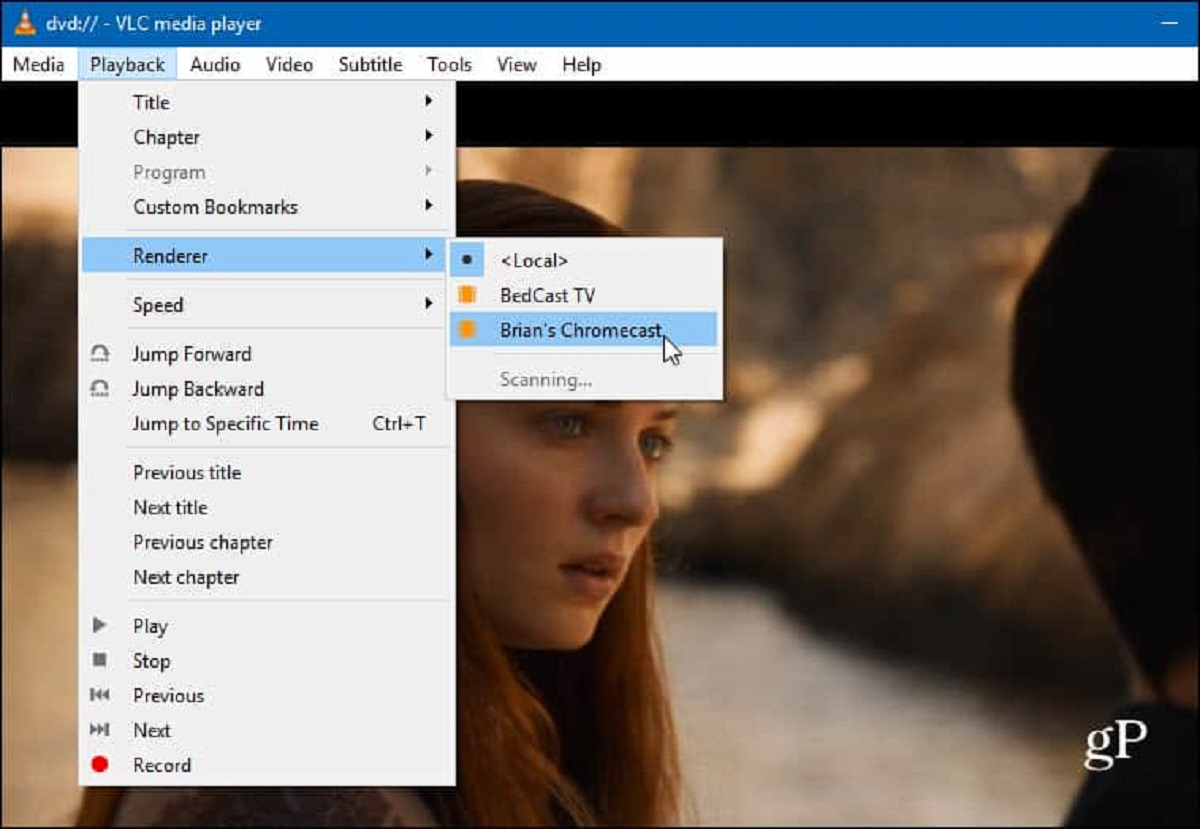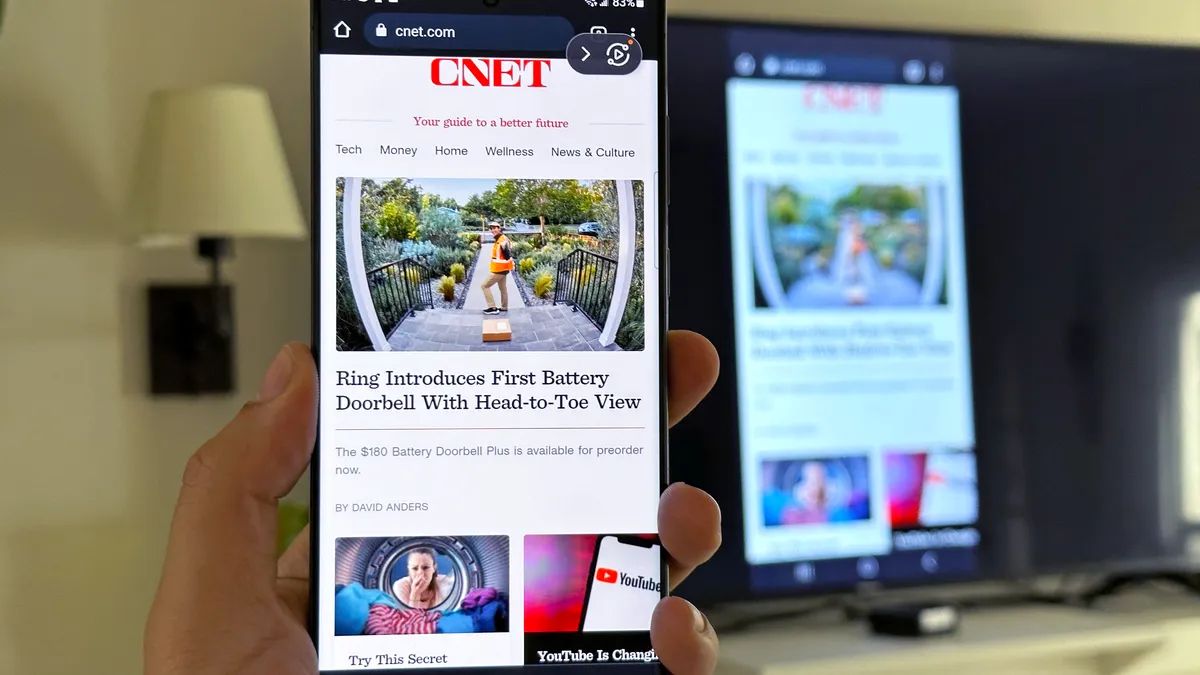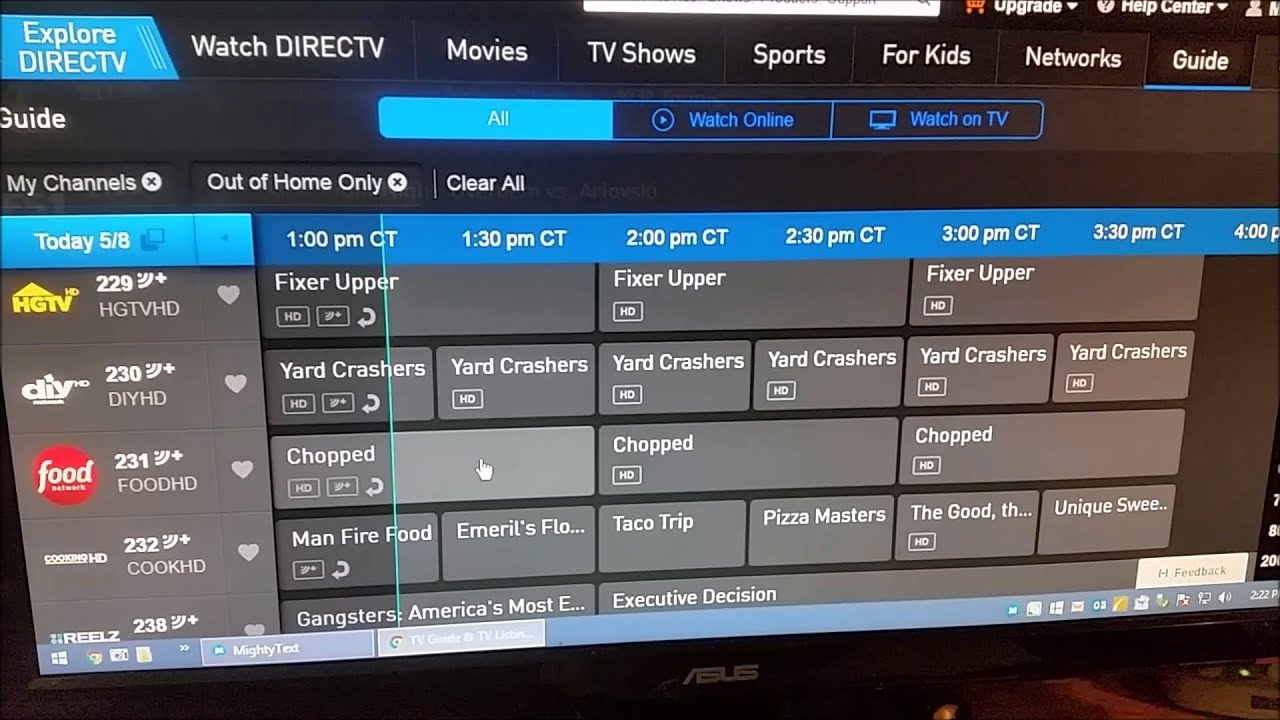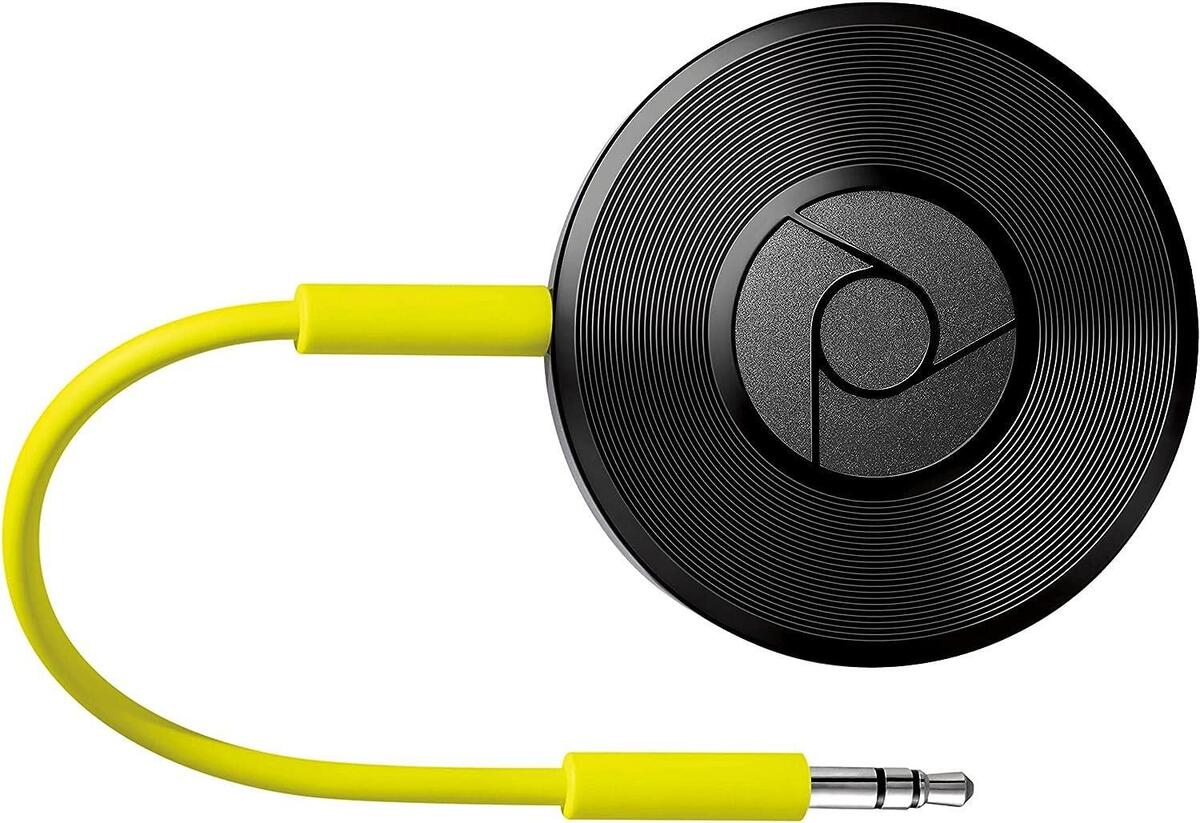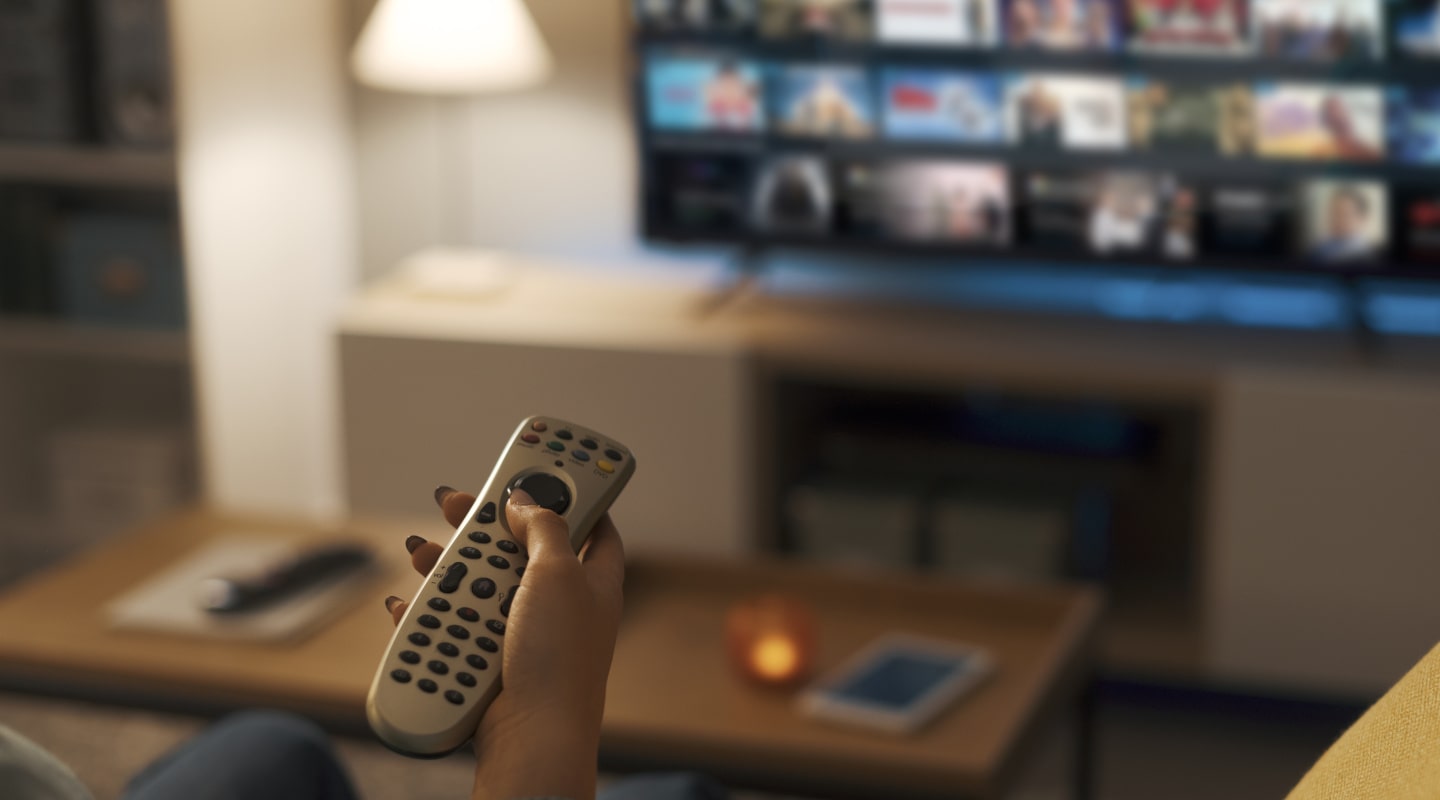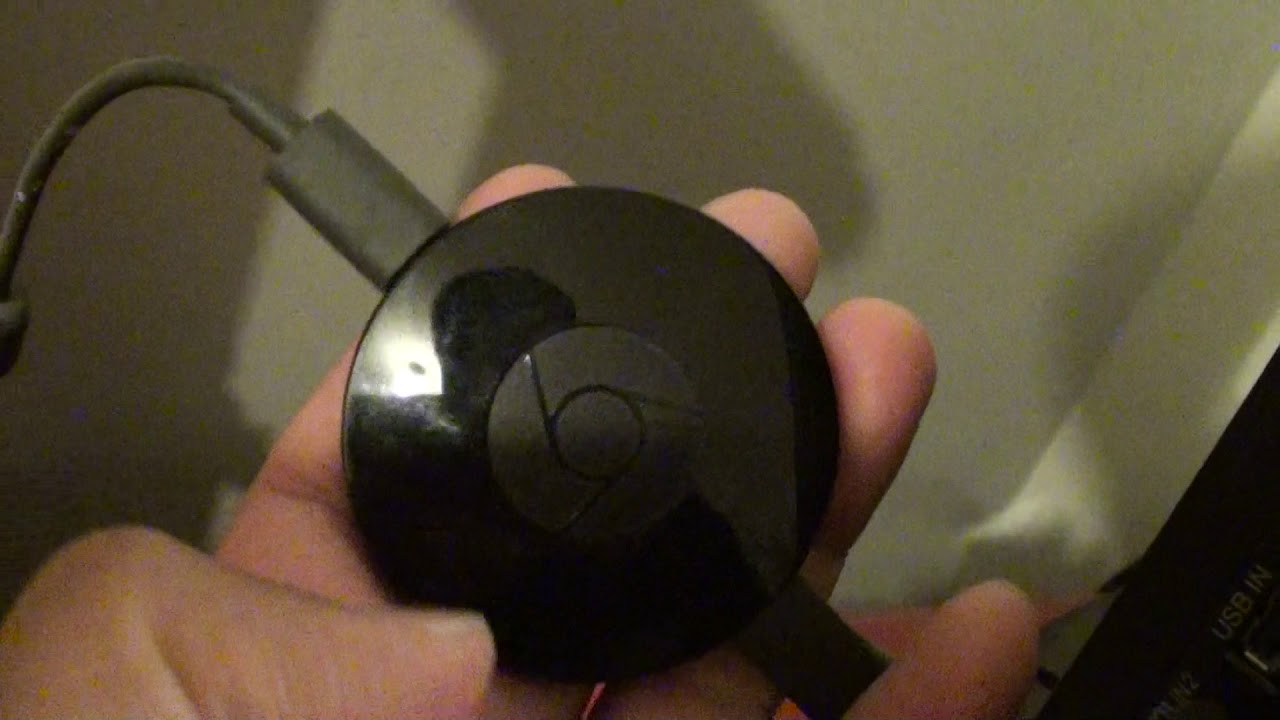Introduction
Having trouble getting your Chromecast to show up on your device? Don’t worry, you’re not alone. Chromecast is a popular device that allows you to stream your favorite content from your phone, tablet, or computer to your TV. However, there can be times when your Chromecast doesn’t show up as an available option, making it impossible to cast your desired content.
This article will explore the reasons why your Chromecast might not be showing up and provide helpful troubleshooting tips to resolve the issue. Whether you’re experiencing this problem for the first time or have been dealing with it for a while, this guide aims to help you get your Chromecast up and running smoothly.
Before we dive into the troubleshooting steps, it’s important to note that the solutions provided in this article are general guidelines that should work for most cases. However, there may be specific scenarios where additional steps need to be taken or professional assistance is required.
So, without further ado, let’s get started on diagnosing and fixing the issue of your Chromecast not showing up!
Reasons Why Chromecast Might Not be Showing Up
There could be several reasons why your Chromecast is not showing up on your device. Here are some common factors that could be causing this issue:
- Network Connection: One of the most common reasons for Chromecast not showing up is a weak or unstable network connection. Ensure that your device is connected to a stable Wi-Fi network.
- Chromecast Power: Check if your Chromecast is properly powered on. Make sure the power cable is securely connected to the device and plugged into a power source.
- Wi-Fi Network Compatibility: Ensure that both your Chromecast and the device you’re using to cast are connected to the same Wi-Fi network. They need to be on the same network for casting to work.
- Wi-Fi Connectivity Issues: Sometimes, Wi-Fi connectivity issues can prevent the Chromecast from showing up. Check if other devices on the same network are experiencing any connectivity problems. Restarting your router or modem can also help resolve the issue.
- Chromecast and Device Firmware: Outdated firmware on either the Chromecast or your casting device can cause compatibility issues. Ensure that both devices have the latest firmware installed.
- Restart Chromecast and Device: Oftentimes, a simple restart can fix minor glitches. Try restarting both your Chromecast and casting device to see if that resolves the issue.
- Disable VPN or Proxy Settings: If you’re using a VPN or proxy on your device, try disabling it as it can interfere with the casting process.
- App and OS Updates: Ensure that your casting app and operating system are up to date. Outdated apps or operating systems can have compatibility issues with Chromecast.
- Clear Cache and Data of Streaming Apps: Clearing the cache and data of streaming apps on your casting device can help resolve any issues related to the app’s performance and connectivity.
- Reset Chromecast to Factory Settings: If none of the above solutions work, you can try resetting your Chromecast to factory settings. This will erase all the settings and data on the device and allow you to set it up again from scratch.
Now that we’ve explored the possible reasons why your Chromecast is not showing up, let’s move on to the troubleshooting steps that you can take to resolve the issue.
Check the Network Connection
One of the most common reasons for Chromecast not showing up is a weak or unstable network connection. To ensure that your Chromecast is able to connect and appear on your device, follow these steps:
- Make sure that your device, whether it’s a phone, tablet, or computer, is connected to a stable Wi-Fi network. Open your device’s settings and navigate to the Wi-Fi menu to check your connection status.
- If you’re using a dual-band router, ensure that both your casting device and Chromecast are connected to the same frequency band (2.4 GHz or 5 GHz). Sometimes, the discrepancy in frequency bands can prevent devices from communicating with each other.
- Check if other devices on the network are able to connect and access the internet. If multiple devices are experiencing connectivity issues, there may be a problem with your router or internet service provider. Restarting your router or contacting your ISP can help resolve any network-related problems.
- Move your casting device closer to the router to ensure a stronger signal. Sometimes, distance from the router can result in a weak connection, causing the Chromecast to not show up on your device.
- Ensure that your Wi-Fi signal is not being interfered with by other devices or objects. Thick walls, electronic devices, and other wireless signals can disrupt the connection. Try moving your router to a more central location or using a Wi-Fi range extender for better coverage.
- If you have access to the router settings, make sure that AP (Access Point) Isolation or Client Isolation is disabled. These settings can prevent devices from communicating with each other on the network.
Checking and ensuring a stable network connection is the first step to troubleshooting the issue of your Chromecast not showing up. By following these steps, you can rule out any network-related problems and move on to other potential solutions.
Ensure Chromecast is Powered On
In some cases, Chromecast may not appear on your device because it is not powered on or receiving adequate power. Follow these steps to ensure that your Chromecast is properly powered:
- Check the power cable of your Chromecast and ensure that it is securely connected to the device. Sometimes, a loose connection can cause power-related issues.
- Ensure that the power cable is plugged into a power source, such as an electrical outlet or a USB port on your TV. If you are using the USB port on your TV, make sure it is providing sufficient power. Some USB ports may not deliver enough power to the Chromecast, resulting in connection problems.
- If you have been using a USB port on your TV, try connecting the Chromecast to a wall adapter using the provided power cable. Using a wall adapter can provide a more stable and reliable power source for your Chromecast.
- Check the LED indicator on your Chromecast. If it is not lit or blinking, it may indicate a power issue. Try using a different power cable or wall adapter to see if that resolves the problem.
- If you have been using a power strip or surge protector, try connecting your Chromecast directly to an electrical outlet. Sometimes, power strips or surge protectors can interfere with the power supply to the device.
- Consider trying a different HDMI port on your TV. While it may not directly affect the power supply, a faulty HDMI port can cause communication issues between your TV and the Chromecast.
By ensuring that your Chromecast is properly powered on, you can eliminate any power-related issues that could be preventing it from appearing on your device. If the problem persists, move on to the next troubleshooting step.
Verify Chromecast and Device are Connected to the Same Wi-Fi Network
One of the key requirements for your Chromecast to show up on your device is that both the Chromecast and the device you are using to cast are connected to the same Wi-Fi network. Here’s how you can verify and ensure that they are on the same network:
- On your device, open the Wi-Fi settings and check the network you are currently connected to.
- Restart your Chromecast by unplugging it from the power source and plugging it back in.
- Wait for your Chromecast to boot up and ensure that it is connected to the Wi-Fi network.
- Now, navigate to the casting or screen mirroring option on your device. This can usually be found in the settings or notification panel.
- Check the list of available devices or cast targets and look for your Chromecast’s name. If it appears in the list, it means that both the device and Chromecast are connected to the same network.
- If your Chromecast does not appear in the list, it may indicate that it is connected to a different Wi-Fi network. In that case, follow the steps below to reconnect your Chromecast:
- On the device you are using to cast, go to the Wi-Fi settings and disconnect from the current network.
- Connect to the Wi-Fi network that your Chromecast is connected to. This network should be the same as the one displayed on your TV screen if using an older Chromecast model.
- Once you are connected to the same Wi-Fi network as your Chromecast, go back to the casting or screen mirroring option and check if your Chromecast now appears in the list of available devices.
Verifying that both your Chromecast and device are connected to the same Wi-Fi network is crucial to establish a connection between them. By following these steps, you can ensure that both devices are on the same network and proceed with the troubleshooting process.
Troubleshoot Wi-Fi Connectivity Issues
If your Chromecast is still not showing up on your device after verifying that both devices are connected to the same Wi-Fi network, it’s time to troubleshoot any potential Wi-Fi connectivity issues. Here are some steps you can take:
- Restart your Wi-Fi router and modem by unplugging them from the power source, waiting for a few seconds, and plugging them back in. This can help resolve temporary connectivity issues.
- Move your router closer to your Chromecast and the device you are using to cast. Sometimes, a weak Wi-Fi signal can cause communication problems. Alternatively, you can consider using a Wi-Fi range extender to boost the signal strength.
- Check if other devices connected to the same Wi-Fi network are experiencing any connectivity problems. If they are, there may be an issue with your internet service provider (ISP) or router. Contact your ISP for assistance or consider resetting your router to factory settings.
- Disable any firewall or security settings that might be blocking the communication between your Chromecast and device. You can do this by accessing your router’s settings and adjusting the firewall or security settings accordingly.
- Change the Wi-Fi channel on your router. If you are experiencing interference from other nearby routers or electronic devices, switching to a less congested channel can improve the Wi-Fi signal quality.
- If you have a dual-band router, ensure that your Chromecast and casting device are connected to the same frequency band (2.4 GHz or 5 GHz). Sometimes, devices on different frequency bands cannot communicate with each other.
By troubleshooting Wi-Fi connectivity issues, you can resolve any underlying problems that might be preventing your Chromecast from appearing on your device. Follow these steps to ensure a stable and reliable Wi-Fi connection for your casting experience.
Update Chromecast and Device Firmware
Outdated firmware on either your Chromecast or the device you are using to cast can cause compatibility issues and prevent your Chromecast from showing up. To ensure smooth operation and compatibility, follow these steps to update the firmware:
- Check for updates on your Chromecast by opening the Google Home app on your device.
- Select your Chromecast device from the list and go to its settings.
- Look for the option to check for updates and follow the prompts to install any available updates.
- Similarly, check for updates on your casting device, whether it’s a phone, tablet, or computer.
- Go to the settings and look for updates or system updates.
- If an update is available, download and install it on your device.
- After updating both your Chromecast and casting device, restart them to ensure that the changes take effect.
Updating the firmware on your Chromecast and casting device is essential to ensure compatibility and resolve any known issues. By keeping both devices up to date, you increase the chances of your Chromecast appearing on your casting screen.
Restart Chromecast and Device
If you’re still encountering issues with your Chromecast not showing up, a simple restart of both the Chromecast and the device you are using to cast can often resolve the problem. Here’s how to do it:
- On your casting device, exit any casting apps or close any running applications.
- Disconnect the power cable from your Chromecast, either by unplugging it from the wall outlet or the USB port on your TV.
- Wait for at least 10 seconds to ensure that the Chromecast completely powers off.
- While the Chromecast is powered off, also restart your casting device. You can either shut it down completely and then power it back on or simply reboot it.
- Once your casting device has restarted, plug the Chromecast back into the power source.
- Wait for the Chromecast to boot up and establish a connection with your Wi-Fi network.
- Open the casting app or screen mirroring option on your device and check if the Chromecast is now showing up.
Restarting both the Chromecast and your casting device can effectively clear out any temporary glitches or conflicts that may be preventing the Chromecast from appearing. This simple step often resolves connectivity issues and restores the normal functioning of your Chromecast.
Disable VPN or Proxy Settings
If you have a VPN (Virtual Private Network) or proxy enabled on your device, it can interfere with the communication between your Chromecast and casting device, potentially causing the Chromecast to not show up. Here’s how you can disable VPN or proxy settings:
- Open the settings on your device and navigate to the VPN or proxy settings. This can usually be found in the Network or Wi-Fi settings section.
- If you have a VPN enabled, turn it off by toggling the VPN switch or selecting “Disconnect”.
- If you’re using a proxy, disable it by deselecting the proxy option or removing the proxy server information.
- After disabling VPN or proxy settings, restart both your Chromecast and the casting device for the changes to take effect.
- Launch the casting app or screen mirroring option and check if your Chromecast is now visible.
By disabling VPN or proxy settings, you eliminate any potential barriers that may be preventing your Chromecast from connecting to your casting device. After making these changes, your Chromecast should appear as an available device for casting.
Check for App and OS Updates
Outdated apps or operating systems on your casting device can sometimes cause compatibility issues and prevent your Chromecast from showing up. Follow these steps to ensure that both your apps and OS are up to date:
- On your casting device, go to the app store (such as Google Play Store or App Store) and check for updates for the casting app or any relevant streaming apps you use.
- If updates are available, install them to ensure that you are running the latest version of the app.
- Next, check for operating system updates on your casting device. Go to the system settings and look for the “System Updates” or “Software Updates” section.
- If an update is available, download and install it to ensure that your device is running the latest version of the operating system.
- After updating both your apps and operating system, restart your casting device to ensure that the changes take effect.
Updating your casting app and operating system is crucial for maintaining compatibility with your Chromecast device. By keeping both up to date, you minimize the chances of encountering any issues that could prevent your Chromecast from appearing on your casting screen.
Clear Cache and Data of Streaming Apps
If you’re still experiencing issues with your Chromecast not showing up, clearing the cache and data of the streaming apps you use can help resolve any potential app-related glitches. Follow these steps to clear the cache and data of streaming apps:
- On your casting device, go to the settings and navigate to the “Apps” or “Application Manager” section.
- Find the streaming apps that you use for casting, such as Netflix, YouTube, or Spotify.
- Select the app and choose the option to “Clear Cache”. This will remove any temporary files that may be causing issues.
- If the problem persists, you can also choose the option to “Clear Data” or “Storage”. This will delete any saved data or settings for the app, so make sure to note down any important information or sign-in credentials beforehand.
- Repeat these steps for all the streaming apps you use.
- Once you have cleared the cache and data of the streaming apps, restart your casting device to ensure that the changes take effect.
- Open the casting app or screen mirroring option and check if your Chromecast is now visible.
Clearing the cache and data of streaming apps can help resolve any app-related issues that might be preventing your Chromecast from appearing. By doing so, you ensure that your apps are starting fresh and any temporary glitches are eliminated.
Reset Chromecast to Factory Settings
If all previous troubleshooting steps have failed to resolve the issue of your Chromecast not showing up, you may need to perform a factory reset. Resetting your Chromecast will erase all settings and data on the device, allowing you to set it up from scratch. Here’s how you can reset your Chromecast:
- Ensure that your Chromecast is connected to your TV and powered on.
- Locate the small button or pinhole on the Chromecast device. The location of the reset button can vary depending on the model.
- Using a paperclip or a similar tool, press and hold the reset button for about 10-15 seconds.
- Release the reset button after the indicated time, and your Chromecast will begin the reset process.
- Wait for your Chromecast to reboot and reset to its factory settings. This may take a couple of minutes.
- Once the reset is complete, you will need to set up your Chromecast again by following the initial setup instructions.
- Download and open the Google Home app on your casting device and use it to reconnect your Chromecast to your Wi-Fi network.
- Follow the on-screen instructions to complete the setup process.
Resetting your Chromecast to factory settings should resolve any persistent issues that were preventing it from showing up on your device. However, keep in mind that this will erase all settings and data, so you will need to set up your Chromecast again and reinstall any apps or extensions.
Conclusion
Having your Chromecast not show up on your device can be frustrating, but by following the troubleshooting steps outlined in this guide, you can resolve the issue and get back to enjoying your favorite content on the big screen. We covered various potential reasons for this problem, including network connection issues, power-related concerns, Wi-Fi connectivity problems, outdated firmware, VPN or proxy settings, outdated apps and operating systems, cache and data buildup, and ultimately, the need for a factory reset.
Throughout the troubleshooting process, make sure to double-check that your Chromecast and casting device are connected to the same Wi-Fi network, and take the necessary steps to ensure a stable network connection. Additionally, keep your Chromecast and casting device firmware, apps, and operating systems up to date to ensure compatibility and smooth casting experience.
By ruling out each possible cause and solution discussed in this article, you can determine the specific issue affecting your Chromecast and take targeted actions accordingly. Remember that it’s always a good practice to restart your Chromecast and casting device before moving on to more advanced troubleshooting steps.
If you have tried all the suggested solutions and your Chromecast is still not showing up, it may be necessary to reach out to the manufacturer’s support for further assistance. They can provide additional guidance and help troubleshoot any hardware-related issues you may be experiencing.
With the troubleshooting steps outlined in this guide, you should now be well-equipped to tackle the problem of your Chromecast not showing up. Enjoy seamless casting of your favorite content to your TV, and make the most of your Chromecast’s capabilities.







